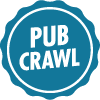What Comes Before Part Two: Best Character, Basic Action, Weakness and Choice
Hello again! A couple of weeks ago, I gave you the start to a worksheet I use for every new project to help fill out my premise, story world, and how I choose to tell your story. Now I’d like to elaborate further on that sheet and go into the beginnings of character.
Before you ever start outlining or even writing your draft, you have to know your characters. Some people do this by filling out a “twenty questions” for each character. Some start writing and discover their characters in the moment. I find that understanding the answers to the questions below (and questions I’ll highlight in the third part of this series in a couple weeks), helps me know what a character will do in any given situation. If I’m ever stumped over what a character might do in a moment, I consult my sheet.
So you’ve already determined your premise, story execution, story world, and story challenges. You probably already know who your main character is, but if you don’t, now is the time to decide who your best character is for telling the story. The girl who has lived for fifteen years in the kingdom dungeons? Or the prince who can’t get his life together? If there are multiple characters you want to tell the story through, now is the time to sort that out.
Once you’ve determined your best character, you’ll want to outline your basic action. This is the action that drives your main character throughout the entire story. Basic action is also informed by story execution – if you plan to use the Journey Principle (see last post), then chances are, your character’s basic action will involve moving toward a specific destination. Your character’s basic action for the entire book will be traveling toward the castle/the space ship/the other side of the US etc. Or, if the story takes place around a competition, then the basic action will be competing/preparing for competition. This might seem remedial, but in those moments when our stories get away from us, remembering what your character’s basic, primal action for this story is will make a world of difference.
Now, think about what taking that basic means for your character. Characters don’t just act without thought or reason – you have to give them motivation to take that action. And that involves weakness.
Character weakness can and should be an integral part of your actual story structure. It should propel your character's personal journey, the basic action, and provide obstacles for him/her along the way. Weakness offers the potential for character change, which is a big part (maybe the biggest) of making a character and her story interesting.
So what is your character’s weakness? It could be that he or she is afraid to live their lives to the fullest because they lost a parent/friend/partner. Or, that he/she is sheltered and ignorant of the world around them – they have to overcome this fear or this lack of knowledge to actually begin the basic action.
Once you’ve identified the weakness and basic action, it’s important to consider who that character is at the end. What do they look like as a changed person? What does the basic action teach them about overcoming their weakness? Perhaps the sheltered person has taken a trip to a developing country and learned that there are lots of suffering people in the world. This character is now a changed person: he or she is no longer sheltered, and perhaps now they have a desire to help people.
The changed person is very satisfying for a reader. How many times have you seen a movie or watched a show and noticed that the character has little to no growth or change? And to be sure, change doesn’t have to translate into positive growth – change can mean someone becomes disillusioned, or cruel, or greedy. Take a look at Walter White in Breaking Bad – Everyone’s favorite teacher gets cancer and through genius and desperation becomes someone he always had the potential be – a virtual Scar Face.
All of this ties into the moral choice your character must make at the end, a choice that they can only make now that they are a changed person. The decision would have been easy to make (or non-existent) before they changed, but now that they have reached the end and learned so much and became a different person, the moral choice will be much harder to make. It’s a confluence of their old life and their new. For the sheltered person, it could mean going back to their country and living their life with a new perspective, and perhaps becoming a volunteer. Or, being offered a chance to stay in this new place and create more radical change. Neither is wrong – but do you think this character would have had a hard time making the choice before?
Okay, I think I’ve given you enough to chew on for this second part in the What Comes Before series – my next post will be going into more depth on character and structure, so be prepared! As always, I hope this was useful, and I’ll be back in a couple of weeks with the last part in the series.






